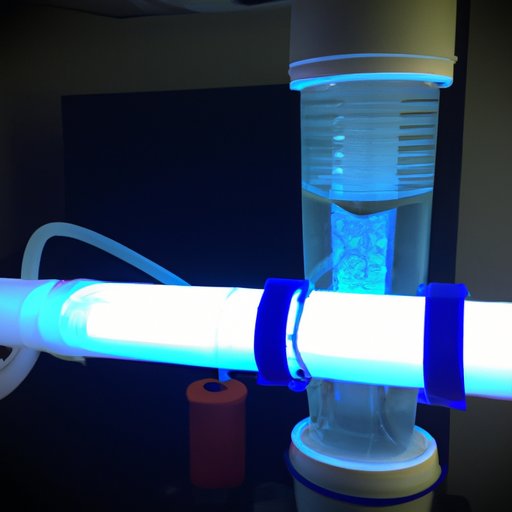Introduction
Well water is water that has been drawn from an underground source, such as an aquifer or spring. It’s often used as an alternative to tap water in rural areas, as it can provide a reliable source of clean drinking water. However, well water isn’t necessarily clean and can contain contaminants that can make it unsafe to drink. Understanding how to clean well water is an important part of ensuring a safe water supply.

Understand the Source of Your Water
The first step in cleaning your well water is to understand the source. Well water can become contaminated by various sources, including agricultural runoff, industrial waste, and septic system leakage. Identifying potential sources of contamination can help you determine the best approach for cleaning your water.
It’s also important to differentiate between surface water and groundwater. Surface water comes from bodies of water, such as lakes and rivers, while groundwater comes from underground sources. Surface water is more likely to be contaminated than groundwater.
Invest in a Home Water Filtration System
Installing a home water filtration system is one of the most effective ways to clean well water. There are several types of home water filtration systems available, including activated carbon filters, sediment filters, and reverse osmosis systems. Each type has its own advantages and disadvantages, so it’s important to do your research and choose the system that best meets your needs.

Test Your Water for Contaminants
Before installing a home water filtration system, it’s important to test your water for contaminants. There are several steps to take before testing, including identifying potential sources of contamination, choosing an appropriate testing method, and selecting a lab to analyze the results. There are a variety of tests available, including tests for bacteria, viruses, metals, pesticides, and other contaminants.
Install a Point-of-Use Filtration System
A point-of-use filtration system is designed to filter out specific contaminants from your water. These systems are typically installed at the point of use, such as a kitchen sink or shower. There are several types of point-of-use filters, including activated carbon filters, sediment filters, and reverse osmosis systems. Each type has its own advantages and disadvantages, so it’s important to do your research and choose the system that best meets your needs.
Utilize Ultraviolet Light Treatment
Ultraviolet (UV) light treatment is an effective way to kill bacteria and other microorganisms in your water. This process works by exposing the water to UV light, which kills any organisms present. UV light treatment is an effective and safe way to clean well water, though it must be used in conjunction with other methods to ensure complete water safety.

Use Reverse Osmosis to Remove Contaminants
Reverse osmosis is a process that uses pressure to force water through a membrane, trapping contaminants on one side and allowing clean water to pass through to the other. Reverse osmosis systems are ideal for removing a wide range of contaminants, including bacteria, viruses, metals, and pesticides. They are often used in combination with other filtration systems for maximum effectiveness.
Conclusion
Cleaning well water is an important step in ensuring a safe water supply. To clean your well water, it’s important to understand the source of your water, invest in a home water filtration system, test your water for contaminants, install a point-of-use filtration system, utilize ultraviolet light treatment, and use reverse osmosis to remove contaminants. By taking these steps, you can ensure that your well water is safe to drink.
(Note: Is this article not meeting your expectations? Do you have knowledge or insights to share? Unlock new opportunities and expand your reach by joining our authors team. Click Registration to join us and share your expertise with our readers.)
